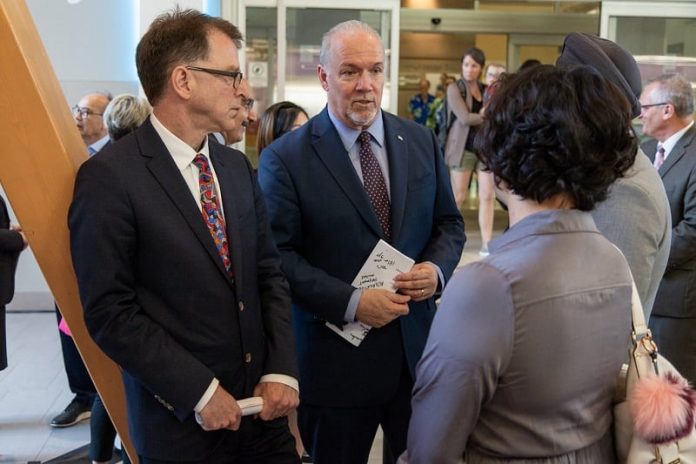
THE B.C. government is launching a new primary health-care strategy to deliver faster and improved access to health care for British Columbians in all parts of the province, Premier John Horgan announced on Thursday.
At the heart of the strategy is a new focus on team-based care that will see government fund and recruit more doctors, nurse practitioners and other health professionals, to put patients back at the centre of health-care delivery.
“By improving how we connect people to care, we can help make sure that British Columbians get the health care they need faster and closer to home,” said Horgan, adding that the expansion of team-based care is a key component of the Confidence and Supply Agreement with the B.C. Green Party caucus.
“The kind of care people need, and how it’s delivered, has to change. It’s no longer as simple as a doctor-patient relationship,” said Horgan. “We need to be looking forward and providing team-based care that better meets the needs of British Columbians. In every community I visit, patients, doctors, nurses and other health-care professionals all say the same thing: ‘Health care delivery must become more patient centred.’ We’re getting the job done.”
The government is putting initial priority on addressing the shortage of general practitioners in the province by:
* Providing funding for up to 200 new general practitioners to work in the new team-based care model.
* Offering opportunities for every family medicine resident to work in a renewed primary care system that allows them to focus their time and energy on practising patient-centred medicine.
Joining Horgan for the announcement, Adrian Dix, Minister of Health, said the focus on team-based care builds on many best practices and solutions that exist within the health-care system, but have yet to be fully leveraged throughout the province. As part of the new strategy, government will be putting in place:
* Primary care networks: These networks will be the backbone to the team-based approach, allowing patients access to a full range of health-care options from maternity to end of life, streamlining referrals from one provider to another, and providing better support to family physicians, nurse practitioners, and other primary health-care providers. The networks are being rolled out in the first five communities, including Burnaby, Comox, Prince George, Richmond and South Okanagan Similkameen. The networks will be rolled out in at least 15 communities over the next 12 months, and across 70% of B.C. communities (with populations between 50,000 and 100,000 and smaller populations in rural areas) over the next three years.
* Urgent primary care centres: These centres will be new to B.C., and will both provide primary care to patients who currently do not have a family doctor or nurse practitioner, and weekend and after-hours care, taking pressure off hospital emergency departments. A total of 10 centres will be established over the next 12 months.
* Community health centres: These health centres will bring together health and broader social services to improve access to health promotion, preventive care and ongoing services. Each of these centres will be designed and developed uniquely in line with the needs of their communities and fully integrated into local primary care networks.
“Our priority is to find new ways of working, co-ordinating services and delivering care so that British Columbians don’t have to wait so long, travel so far, and search so hard for the care they need,” said Dix. “We’re providing the opportunities and framework for health professionals, stakeholders and organizations to come together at the local level and put in place solutions that work for that community.”
Dix added that government will be implementing additional technology solutions that help bring health care even closer to home for people, particularly those in rural and remote areas of the province. This will include more use of telehealth services that bring patient and provider together online, and new digital home health monitoring technology.
The primary health-care strategy dovetails with the recently announced surgical and diagnostic strategies, which will see 9,400 more surgeries and 37,000 more MRIs completed this year, in addition to the work already underway on the renewal of hospitals in British Columbia.
The primary health-care strategy adds to the May 23 announcement that the Ministry of Health is providing funding to create 200 nurse practitioners’ (NP) positions in primary care settings throughout B.C., and create 30 new NP education seats. These NPs will be supported in joining primary care practices, as well as establishing nurse practitioner-led primary and community care clinics.













